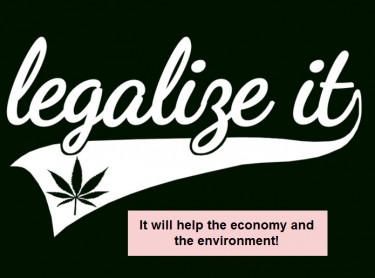Cannabis News
The Coming Psychedelic Revolution without Big Pharma? Here is How to Do It!
Published
2 years agoon
By
admin

Decentralizing Divinity: The Fight to Preserve Our Entheogenic Heritage and Safeguard the Psychedelic Renaissance
Amidst the dawn of a new psychedelic age, the struggle for the soul of our entheogenic heritage hangs in the balance. As powerful forces vie for control, the question remains: will we unite to preserve our sacred birthright, or succumb to a synthetic nightmare that undermines our very essence as sentient beings?
In the intricate dance of life, humanity and psychedelics have long been partners, moving in harmony with the natural rhythm of the universe. This sacred journey, an intrinsic part of our collective birthright, weaves the threads of consciousness and self-discovery into a vibrant tapestry of existence. As sentient beings upon this Earth, our essence is inextricably linked to the very planet we inhabit. When we embark on the mind-expanding voyages that psychedelics afford us, we are not merely indulging in a fleeting experience; we are reconnecting with our primal roots.
To make psychedelics illegal, substances that have coexisted with us since time immemorial, is to declare our own essence illicit. The Earth itself is our mother, our source, and the wellspring of all that we are. To criminalize the natural bounty she provides is to deny our own identity and sever the bond we share with the cosmos. In the unfolding story of our existence, the path of psychedelics is a vital chapter, one that leads us to a deeper understanding of our place in this grand celestial dance.
A Flicker of a Revolution, an Ember of Hope
In an inexplicable turn of events, we, the children of Earth, have come to entrap ourselves in our own self-woven webs, the fine threads of which we call “government.” Through this peculiar construct, we have taken the very essence of our planet, divided it, and assumed the role of dominators, exerting control over our own kind.
The 1960s were a time of great promise, a flickering ember of a revolution that seemed poised to ignite the world. Visionaries like Leary, Das, Watts, and McKenna emerged as torchbearers, shaping the Western world in ways still not fully comprehended. These trailblazers sowed the seeds of freedom deep within the collective psyche, nurturing our inherent rights to express, create, and simply be ourselves, without constraint.
Their groundbreaking work laid the foundations for the eventual acceptance and legalization of cannabis, despite the heavy hand of government intervention through the Controlled Substances Act and the War on Drugs. Astonishingly, even under the immense pressure of this governmental force – Earth masquerading as something altogether alien – we now witness the resurgence of psychedelics, a new dawn on the horizon.
But this nascent psychedelic renaissance is not without its lurking shadows. Among the greatest threats to this burgeoning revolution is Big Pharma, the behemoth that has fixed its gaze upon these ancient, sacred substances. Should we fail to curtail their influence, the long-awaited renaissance could devolve into a synthetic nightmare, wrought upon humanity by the very hands that once sought to heal.
The revival of interest in psychedelic research and therapy is a double-edged sword.
On one hand, it brings renewed attention to the profound healing potential of these substances, revealing their capacity to treat a wide array of mental health disorders, from PTSD to depression.
But with such attention comes the risk of exploitation, as pharmaceutical companies, driven by profit and hungry for control, seek to commodify and capitalize on these powerful tools of consciousness.
The danger lies in the potential for these corporations to bastardize these sacred substances, to strip them of their essential connection to nature, and transform them into sterile, synthetic compounds devoid of soul.
This metamorphosis would not only sever the bond between humanity and Earth but could also usher in an era of unforeseen consequences, as we meddle with the delicate balance of our own minds.
To preserve the sanctity of psychedelics and protect their role in our collective journey, we must demand decentralization. We must resist the urge to relinquish control to monolithic entities, to offer up our very essence as fodder for their insatiable appetites.
In the fight for our minds and souls, we must assert our autonomy and reclaim our birthright as sentient beings, connected to the Earth and the cosmos beyond.
This doesn’t mean we shouldn’t have pharmaceutical research done
It is crucial to note that pharmaceutical research can indeed be beneficial to our understanding of psychedelics. In fact, such research is more than welcome. We need cutting-edge science to delve into the depths of these compounds and investigate their interactions with our psyche. The integration of artificial intelligence could even unlock the secrets of consciousness or stimulate cross-disciplinary innovations that reshape our ways of thinking.
That being said, we must not grant the pharmaceutical industry exclusive dominion over these powerful substances. By relinquishing our control and allowing them to monopolize psychedelics, we risk eradicating our role in the unfolding narrative of these entheogens.
Pharmaceutical corporations and government regulatory bodies have given us little reason to trust them. Here are three real-world examples that illustrate their shortcomings and betrayals:
-
The opioid crisis, largely fueled by Purdue Pharma’s aggressive and misleading marketing of OxyContin, has led to widespread addiction, countless overdoses, and devastating loss of life.
-
The approval of thalidomide in the 1950s and 1960s resulted in tragic birth defects due to insufficient testing and inadequate regulations.
-
The revolving door between government regulatory agencies and the pharmaceutical industry, as seen with the appointment of former Monsanto executive Michael Taylor to the FDA, raises concerns about conflicts of interest and the prioritization of corporate interests over public health.
These examples (and there are MANY more) highlight the necessity of wresting control from those who would exploit drugs for profit or self-interest. It is this understanding that underpins my passionate advocacy for nullifying the Controlled Substances Act and decentralizing the power over these substances.
Psychedelics and other entheogens hold a unique and vital place in our shared human experience. To preserve their sanctity and ensure they remain accessible to all, we must champion a future in which these substances are free from the clutches of corporate and governmental control.
Can we find a balance? I think so!
Recognizing the use of entheogens as a fundamental human right is of paramount importance. These substances have long been entwined with our collective ethos, inspiring religions, philosophies, and ideas across cultures and throughout history. To safeguard this rich heritage, we must find a harmonious balance between individual freedom and corporate involvement.
The first step toward achieving this equilibrium is to reach a global consensus that entheogens are indeed a human right. Every consenting adult should have the autonomy to decide what they do with their own bodies. Anything less than this would undermine the notion of personal sovereignty, relegating individuals to a state of servitude.
With this understanding, we can shift our perspective on anti-drug policies, recognizing them as violations of our inalienable rights. This shift would necessitate a massive restructuring of the way we approach the use and distribution of these substances.
We must advocate for the availability and free trade of entheogens (excluding those on the endangered species list) among individuals and small operations. Drawing inspiration from the proposed two-tier cannabis society—one tier for local commerce and another for national and international commerce—we can envision a similar system for entheogens.
Clubs, collectives, and small cultivators should have access to raw plant materials, fungi, roots, and the like, and should be allowed to process these entheogens into consumable forms such as drinks, food, and extracts. Meanwhile, pharmaceutical companies can focus on large-scale production and the development of medicines for those who wish to reap the benefits of psychedelics without engaging in the full psychedelic experience—a demographic that far exceeds the number of active psychonauts.
A harmonious coexistence between individuals and large corporations is possible, but it requires us to stand up and demand our rightful share of the psychedelic landscape. If we do not assert our rights, we risk falling prey to the whims of profit-driven enterprises, which may exploit our vulnerabilities and utilize the government to force compliance.
In this era of shifting perspectives and renewed interest in the world of entheogens, we have a unique opportunity to reshape the future of psychedelics. It is our duty to ensure that this future upholds the sanctity of these substances and honors the profound role they have played in our collective human journey.
From the Joe Rogan Experience interview with Dr. Andrew Huberman, a quote that emphasizes the importance of acknowledging cultural implications in the conversation around psychedelics is:
“The classic psychedelics community isn’t going to like that; they’re like, ‘No, this is plant medicine; it’s got a hundred thousand year history or more, indigenous people, etc.’ Academia and Pharma don’t care about that.”
This quote highlights the need for us, as individuals and as a society, to ensure that the cultural significance of psychedelics remains an integral part of the conversation. While the scientific community and pharmaceutical industry may primarily focus on the potential profits and clinical applications, we must not forget the rich historical and cultural context in which these substances have played a pivotal role. By keeping this perspective at the forefront, we can work to preserve the sanctity of these entheogens and ensure that their use remains accessible and respectful of the traditions from which they emerged.
The Sticky Bottom Line
In conclusion, our shared human journey has been deeply intertwined with the use of entheogens, powerful substances that have played an essential role in shaping our cultures, religions, and philosophies. As we stand on the cusp of a new psychedelic renaissance, we must not let our collective heritage be overshadowed by the interests of pharmaceutical corporations or the narrow focus of scientific research.
The resurgence of interest in psychedelics offers a unique opportunity to redefine our relationship with these substances. We must strive for a harmonious balance that upholds individual autonomy and respects the cultural significance of entheogenic practices. By establishing a two-tiered system that allows for local commerce and individual access while still enabling large-scale research and production, we can create a future that honors the sacredness of these substances.
To achieve this future, we must come together as a global society and recognize the use of entheogens as a fundamental human right. This understanding would necessitate a massive restructuring of our current approach to drug policy, with the aim of decentralizing control and ensuring the availability of these substances to all who seek them.
Now is the time for us to take a stand. If you believe in the sanctity of entheogenic practices and the importance of preserving our collective heritage, join us in advocating for the protection of these rights. Demand a more compassionate and equitable approach to the use and distribution of psychedelics, one that safeguards the cultural and spiritual significance of these substances for generations to come. Together, we can create a future where our connection with entheogens remains unbroken and their profound role in our shared human experience is honored and respected.
ENTHEOGENIC CANNABIS ISCOMING, READ ON…
You may like
Cannabis News
Scientists Now Think That One Compound in the Cannabis Plant Can Replace All Opiates
Published
1 day agoon
April 3, 2025By
admin

Which Cannabis Compound Do Scientists Think Can Replace Opiates?
…And Why This Is Important
Opiates are a type of pharmaceutical drug that’s been made from the opium poppy plant. While it’s somewhat a ‘natural’ substance that’s been extracted from the fibers and sap of the opium poppy plant, these are extremely dangerous sedatives that act on the central nervous system. However, there are completely synthetic opioids as well, which are manufactured entirely in laboratories.
Famous examples of well-known and widely-used opiates today include heroin, codeine, and morphine. They all work similarly, binding to the brain’s opioid receptors and users feel a drastic reduction in pain. It also causes users to feel euphoric, drowsy, or sleepy. Common side effects include constipation and nausea.
Because opiates are powerful for dulling one’s pain perceptions, they have become commonly prescribed by doctors and hospitals for pain relief. That said, opiates have become one of the world’s most addictive, dangerous, and fatal drugs – and you can get prescribed it right by your very own physician. Repeated use of opiates can easily lead to dependence and addiction, and eventually consuming high doses can drastically slow down breathing, and cause brain damage, or even death.
Since doctors still keep prescribing opioids, this has resulted in the deadly Opioid Epidemic, which has killed thousands of people. It’s a worrisome public health crisis, most especially because of fentanyl, an illegally manufactured opioid which is said to be 50 times more potent than heroin.
Could The Answer To The Opioid Epidemic Lie In Cannabis…Terpenes?
The past few years have shown that cannabis legalization is critical for surviving the opioid epidemic, and reducing overall opioid consumption.
The results of a recent research paper, which builds on past studies conducted by Dr. John Streicher, who is a member of the Comprehensive Center for Pain and Addiction, reveals fascinating findings. According to Streicher, cannabis terpenes were found to provide relief in inflammation models as well as on neuropathic pain caused by chemotherapy.
For the study, Streicher and his research team analyzed 4 kinds of terpenes that are found in mid to high levels in Cannabis sativa plants: linalool, geraniol, beta-caryophyllene, and alpha-humulene. They discovered that each terpene produced significant pain relief among mice subjects with fibromyalgia and post-operative pain, and among the terpenes, geraniol was found to be the most powerful.
“Our research is showing that terpenes are not a good option for reducing acute pain resulting from an injury, such as stubbing your toe or touching a hot stove; however, we are seeing significant reductions in pain when terpenes are used for chronic or pathological pain,” he said. “This study was the first to investigate the impact of terpenes in preclinical models of fibromyalgia and post-operative pain and expand the scope of potential pain-relieving treatments using terpenes,” Streicher said.
Cannabis terpenes are the compounds responsible for the aromatic profile of each strain; they are located in the plant trichomes. Not only do they contribute to each strain’s unique flavor and odor, but they also have valuable therapeutic and medicinal benefits. There are around 150 kinds of terpenes known today, though in the entire plant world, there are known to be some 20,000 terpenes.
Understanding the therapeutic benefits of terpenes is incredibly valuable also because they don’t contain THC (tetrahydrocannabinol), the compound in marijuana that gets you high.
“With fibromyalgia, there isn’t much of an understanding of what the pain state is, and there are not a lot of great options for treating it,” explains Streicher. “Our findings show that terpenes may be a viable treatment option for fibromyalgia pain, which could potentially have a large impact and make a difference for an under-treated population.”
Other Studies
This is not the first time that cannabis terpenes have been found to demonstrate excellent pain-relieving properties. It must be noted that just like what Streicher says, terpenes seem to do better with chronic pain management, instead of acute pain management.
Another study from 2024, which was published in The Journal of the Association for the Study of Pain, was conducted by researchers at the University of Arizona and the National Institutes of Health. The investigators analyzed the analgesic properties of different terpenes including geraniol, humulene, linalool, pinene, and caryophyllene among mice subjects with chemotherapy-induced peripheral neuropathy.
According to the researchers, all the terpenes delivered analgesic effects that were equivalent to around 10 mg/kg of morphine. It was also interesting to note that administering both morphine and terpenes together at low doses resulted in ‘enhanced’ pain-killing effects.
“Together these studies identify cannabis terpenes as potential therapeutics for chronic neuropathic pain,” said the investigators.
There have also been other studies that have found that combining cannabis with opioids can indeed provide long-lasting pain relief. It comes with the added benefit of reducing opioid doses needed for effective pain control. This phenomenon is called opioid-sparing. These types of protocols can be beneficial for patients who suffer from severe, chronic pain caused by cancer, arthritis, joint problems, fibromyalgia, diabetes, post-surgical pain, migraines, nerve damage, and so much more.
Conclusion
Learning more about the pain-killing properties of terpenes is extremely valuable for the medical community, patients, and even society as a whole. We can all do with less opioid addictions because it has torn families apart, and caused the deaths of thousands of people.
Terpenes, or cannabis in general, offer a natural and safe alternative that can be complementary to other pharmaceutical treatments designed to reduce pain.
SWAPPNG OPIOIDS FOR CANNABIS, READ ON…


Cannabis and the Authoritarian State
Cannabis has been legal for longer than it has been illegal. Let that sink in for a minute. For thousands of years, humans cultivated and consumed cannabis freely across civilizations and continents. It wasn’t until the early 1900s that we witnessed a massive push to drive hemp and cannabis into the black market, primarily due to industrial competition from petrochemicals, pharmaceuticals, and other industrial applications.
What makes cannabis so threatening to powerful interests? For starters, hemp and cannabis are highly versatile crops with over 50,000 different uses, from medicine to textiles to fuel. Even more remarkable is how this plant is hardwired to work with the human body through our endocannabinoid system—a biological network we didn’t even discover until the 1990s.
Perhaps most threatening of all is that cannabis is insanely easy to grow. This means that if the plant helps you with a particular physical ailment, you have the ability to grow your own medicine indefinitely. No insurance premiums, no wait lists, no pharmaceutical middlemen—just you cultivating your own healing directly from the earth.
Authoritarians do not like this, not one bit. When people can meet their own needs independently, power structures lose their grip. When citizens can think differently without permission, control systems begin to fail. So today, we’re going to look at the interesting relationship between authoritarianism and cannabis, and how this humble plant plays a key role in keeping you free.
We’ve already established the versatility of cannabis, but there’s another element that those old D.A.R.E. PSAs inadvertently reveal about what authoritarians think about cannabis. I’m talking, of course, about “behavior.” You see, in an authoritarian system, you and I are but cogs in the machine. We’re the expendables who should be proud to work ourselves to death for our “fearless leaders.”
This is precisely why certain ideas, philosophies, religions, movements, books, and substances are typically banned in authoritarian regimes. Take North Korea as an example: everything from the type of television citizens watch to the music they hear is a tightly spun spell designed to keep the populace in check. While they don’t have explicit laws against hemp (they actually grow it industrially), smoking psychoactive cannabis is strictly forbidden.
Contrast this with places like Malaysia, where you can get up to 5 years for possessing just 20 grams of cannabis, and even face the death penalty depending on the situation. These authoritarians don’t play around when it comes to cannabis because they know it affects the behavior of their populace in ways they can’t control.
The question becomes: what behavior do they fear so much that cannabis produces within the individual?
The answer is a critical mind. People who consume cannabis often begin to question their own belief systems. Most regular users undergo some transformation in their values and perspectives. Cannabis has a unique way of helping people see beyond cultural programming and think outside established paradigms. It can make the familiar strange and the strange familiar—a psychological state that’s antithetical to authoritarian control.
This independent thinking runs counter to the narrative of authoritarians who wish to maintain a tight grip on social consciousness. If even 10% of a population begins to pivot in their behavior within a regime, it can have massive ripple effects. Just look at cannabis in the US—it went from being demonized to being embraced by the majority in less than 80 years, despite massive propaganda efforts.
For authoritarians, psychoactive cannabis isn’t primarily a threat to public health and wellbeing—it’s a threat to the health and wellbeing of authoritarianism itself. When people start thinking differently, they start living differently. When they start living differently, they start demanding different. And that’s the beginning of the end for any system built on unquestioning obedience.
Beyond the threat to thought control, there’s another reason why drugs in general remain illegal: the state can use prohibition as a weapon against the populace. This isn’t conspiracy theory—it’s documented history.
Take Nixon’s war on drugs. His domestic policy chief, John Ehrlichman, later admitted: “We knew we couldn’t make it illegal to be either against the war or black, but by getting the public to associate the hippies with marijuana and blacks with heroin, and then criminalizing both heavily, we could disrupt those communities.” Nixon essentially placed cannabis on the Controlled Substances Act because he needed an excuse to shut down anti-war protests and target Black communities.
Since hippies and anti-war protesters were smoking “freedom grass,” making it illegal would circumvent their freedom of speech and freedom of assembly, and more importantly—turn free citizens into state property. It’s a win-win if you’re an authoritarian looking to silence dissent.
Then there’s the whole “boogeyman” complex that prohibition creates. We’re told “drug dealers” are roaming the streets preying on innocents, giving them “marihuanas” so they can do vile things. What the government conveniently leaves out is how the banks these “dealers” use to launder their money remain untouched. They don’t mention the shadier dealings of law enforcement either—like running guns into Mexico (eventually leading to the death of one of their own), or spraying poison on crops, killing and hospitalizing people because, you know…”Drugs are bad!”
Authoritarians cannot let go of the value that keeping the most widely used illicit substance in the world illegal provides them. This explains why the US hasn’t federally legalized cannabis despite nearly 80% of Americans supporting some form of legalization. It’s not because they don’t have enough research or that they’re genuinely concerned about public health—it’s because prohibition gives them all the privileges of violating constitutional rights while siphoning money into their coffers.
Drug prohibition creates a perpetual enemy that can never be defeated, allowing endless justification for surveillance, militarized police, asset forfeiture, and expansion of state power. What authoritarian could resist such a convenient tool?
Cannabis is a plant. You can’t make nature illegal—it’s counter to the human experience. When governments attempt to criminalize a naturally occurring organism that humans have cultivated and used for thousands of years, they reveal the absurdity of their position and the limits of their authority.
While the United States isn’t a full-on authoritarian state (yet), the truth is that many authoritarian elements have played out over the years. You only need to look as far as the war on drugs to see how the state utilizes prohibition as a weapon to their advantage. From no-knock raids to civil asset forfeiture to mass incarceration, drug laws have erected a parallel legal system where constitutional protections often don’t apply.
The fundamental truth is that cannabis is not only versatile and medicinal, it gives you back your autonomy in multiple ways. It helps you think for yourself. It allows you to grow your own medicine. It connects you with a plant that humans have used ceremonially, medicinally, and industrially throughout our history. And this autonomy is something authoritarians cannot stand—free individuals who know how to think beyond the narratives they’re fed.
Cannabis doesn’t just get you high—it offers a perspective from which the absurdities of prohibition become glaringly obvious. Perhaps this is why, as state after state legalizes, we’re witnessing the slow but steady unraveling of one of the most enduring authoritarian policies in American history.
So if you count yourself among those who value freedom of thought and bodily autonomy, who believe that nature doesn’t require government permission, and who understand that true liberty includes the right to explore your own consciousness—well, maybe it’s time to toke one up for freedom!
LEGALIZING CANNABIS IS NOT ENOUGH, READ ON..
Cannabis News
Stop Using Bat Poop to Fertilize Your Weed Plants Immediately, Here is Why…
Published
3 days agoon
April 1, 2025By
admin

Don’t Fertilize Your Weed with Bat Poop
Fertilization is a critical step for growing healthy marijuana plants.
They help provide essential nutrients for marijuana in various stages of growth, while promoting plant growth. There are dozens of different fertilizers to choose from in the market; growers can choose based on budget, nutrients needed, location, season, and much more. But not all fertilizers are made equally – of course, some are of better quality than others.
That said, there are some rather unusual fertilizers that can be used on plants. These may include, but are not limited to: coffee, milk, grass clippings, banana peels, fish tank water, potato water, and even urine! Yes, it does sound strange, but to gardening enthusiasts, there is nutritional value to be found in each of these things, which can make them suitable fertilizers depending on the circumstances.
For example, grass clippings make excellent mulch and can provide potassium, nitrogen, and phosphorus. Urine is a potent source of nitrogen as well as phosphorus. Banana peels are rich in calcium, which is excellent for promoting root growth while helping supply oxygen to the soil.
But what about bat poop? Also known as guano, bat poop has been said to work as a plant fertilizer because it’s rich in nitrogen, potassium, phosphorus, and other nutrients. Unfortunately, using bat poop as a plant fertilizer can also be dangerous. So if you don’t really know what you are doing, bat poop as a fertilizer can be extremely risky.
Bat Poop Fertilizer Kills 2 NY Men
On December 2024, news of two men hailing from Rochester, New York, dying went viral.
The cause of death was dangerous fungus, in the bat poop that they were using to fertilize their marijuana plants. Both men grew their own marijuana plants for medical consumption, but unfortunately developed histoplasmosis after breathing toxic fungal spores from the guano.
One of the men was aged 59 years old; he bought bat poop online to use as fertilizer for his plants. Meanwhile, the other was a 64-year-old male who found guano in his attic, then decided to use it to fertilize his cannabis plants. They both developed similar symptoms, including chronic coughs, fever, severe weight loss, and respiratory failure. The case was also discussed in the Open Forum Infectious Diseases medical journal.
Is there a safe way to use bat poop as fertilizer? If you ask me, I truly can’t understand why one would use guano as fertilizer when there are so many other proven safe alternatives out there that are simply not as risky. According to the University of Washington, one must always wear a dust mask each time you open a bag containing soil amendments. That’s because a mask will greatly decrease the chances of breathing in fungal spores, which could be potentially dangerous. They also go on to explain that yes, guano is indeed used as fertilizer for its valuable nitrogen content but it still isn’t without its own risks, particularly of developing Histoplasma – the same condition that killed the two men.
Make Your Own Safe Fertilizers At Home
There are many other safe, affordable – and even free – fertilizers you can feed your marijuana plants with. It doesn’t have to cost a fortune nor does it have to be risky to your health.
Check out these easy, low-cost, DIY fertilizers for weed:
-
Coffee grounds are abundant in nitrogen, which makes it perfect for the vegetative stage of marijuana plants. They are also a fantastic source of organic materials and green waste, which contain other vital nutrients. When the coffee grounds decompose, they create soil aggregates that improve soil aeration and its water retention capabilities.
Mix around 2 grams of coffee ground for every liter of soil. Measuring its pH levels is also helpful, since you want it to be between 6 to 6.5
-
Crushed eggshells are a great way to ensure no eggshells go to waste. It’s rich in calcium plus other minerals that are effective in improving overall plant structure, health, and growth. In fact, so many gardeners and farmers commonly use crushed eggshells to help boost plant growth – and it will work just as well for marijuana plants.
They’re really easy to use, too! Just mix eggshells into the soil, or steep them into water then pour into the soil for a calcium-packed feed.
-
Banana tea or water is rich in potassium and magnesium, making it perfect as a feed during the marijuana plant’s flowering stage. You can use banana peels differently: with 3 to 5 banana peels, soak it in water for 2 days. Then you can use the water on your plants, and even leave the banana peels as compost for your garden.
-
Wood ash from your fireplace or other sources is a great source of phosphorus and potassium. Simply sprinkle some wood ash over marijuana during the final flower phase. Just use 1 or 2 grams of ash for every liter of substrate. Be careful not to use too much wood ash, or it can make the soil too alkaline.
-
Animal manure, such as those from cows, rabbits, or horses, make excellent organic fertilizers. Just be sure that they’re composed properly so that you avoid introducing weed seeds, or pathogens.
These low-cost fertilizers are also natural and effective. There’s no reason for you to turn to bat poop as fertilizer, even if you’re in a bind.
Conclusion
Guano or bat poop is a poor choice of fertilizer if you don’t know what you are doing. It’s risky and potentially dangerous – just not worth it. Instead, fertilize your marijuana plants with these options mentioned.
BEST POOP FOR CANNABIS PLANTS, KEEP READING…

Karma Koala Podcast 247: Speaking with Dr. Natalie Corthésy senior lecturer university of West Indies & Enrico Bonadio professor of law City St George’s University of London about their forthcoming Edward Elgar title, “Intellectual Property and Cannabis”

MJBizCon offers speakers chance to share cannabis insights, shape industry

The Best Tariff Friendly Cocktails

Cannabis Consumers Are Being Hit By The Tariffs

The Best Tips To Update Your Wardrobe

Former New York Knick Iman Shumpert debuts ‘TSA Approved’ legal cannabis brand

How New York pot pioneers made it to legal dispensary shelves

Scientists Now Think That One Compound in the Cannabis Plant Can Replace All Opiates

Vladimir Bautista is leading Happy Munkey’s legacy-to-legal takeover

Cannabis Can Help A Sore Throat

Distressed Cannabis Business Takeaways – Canna Law Blog™

United States: Alex Malyshev And Melinda Fellner Discuss The Intersection Of Tax And Cannabis In New Video Series – Part VI: Licensing (Video)

What you Need to Know

Drug Testing for Marijuana – The Joint Blog

NCIA Write About Their Equity Scholarship Program

It has been a wild news week – here’s how CBD and weed can help you relax

Cannabis, alcohol firm SNDL loses CA$372.4 million in 2022

A new April 20 cannabis contest includes a $40,000 purse

Your Go-To Source for Cannabis Logos and Designs

UArizona launches online cannabis compliance online course
Trending
-

 Cannabis News2 years ago
Cannabis News2 years agoDistressed Cannabis Business Takeaways – Canna Law Blog™
-

 One-Hit Wonders2 years ago
One-Hit Wonders2 years agoUnited States: Alex Malyshev And Melinda Fellner Discuss The Intersection Of Tax And Cannabis In New Video Series – Part VI: Licensing (Video)
-

 Cannabis 1012 years ago
Cannabis 1012 years agoWhat you Need to Know
-

 drug testing1 year ago
drug testing1 year agoDrug Testing for Marijuana – The Joint Blog
-

 Education2 years ago
Education2 years agoNCIA Write About Their Equity Scholarship Program
-

 Cannabis2 years ago
Cannabis2 years agoIt has been a wild news week – here’s how CBD and weed can help you relax
-

 Marijuana Business Daily2 years ago
Marijuana Business Daily2 years agoCannabis, alcohol firm SNDL loses CA$372.4 million in 2022
-

 California2 years ago
California2 years agoA new April 20 cannabis contest includes a $40,000 purse







